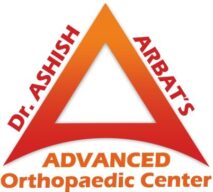
The most common joints to be affected by osteoarthritis (OA) is knee. Most importantly, it can lead to serious effects on one’s mobility, quality of life and livelihood. Pain, inflammation, and stiffness from cartilage impairment and loss can make it hard even to walk or climb stairs. And if you have a job that necessitates you to be on your feet and moving, deteriorating knee OA will make it problematic or dreadful. That’s why knee replacement is one of the most common orthopedic surgeries performed globally, and it’s being done at younger ages as people live longer and struggle to extend their activities and quality of life. Read on to learn the connection between knee injuries and osteoarthritis.
Dr. Aashish Arbat a globally much-admired Knee Replacement Surgeon in Pune with over two decades of persistent work towards treating patients through advanced techniques explains the link between knee injuries and osteoarthritis.
Contents
Knee Injuries and Osteoarthritis
Knee injury and osteoarthritis are linked in the following ways:
Post-traumatic arthritis is a kind of osteoarthritis that happens after disturbance to your knee, say an injury from a car crash or contact sport.
Injuries or other joint problems, like gout, can increase the risk of osteoarthritis
The genes we receive from our parents can also upsurge the risk of the condition developing.
Being obese is linked to osteoarthritis, as this leads to extra stress on weight-bearing joints, such as your knees.
Joint injuries, for example, those that ensue when playing sports or from an accident, can lead to the risk of osteoarthritis
How I cured my knee osteoarthritis? It is important to have proper knowledge of Osteoarthritis Knee Treatment.
New Treatments for Osteoarthritis of the Knee
- Weight loss
- Exercise
- Pain relievers and anti-inflammatory drugs
- Injections of corticosteroids or hyaluronic acid into the knee
- Alternative therapies
- Using devices such as braces
- Physical and occupational therapy
- Surgery
You Might Refer Reading: Knee Replacement Operation
Early Knee Arthritis Symptoms
- Creaking, clicking, grinding, or snapping noises (crepitus)
- Difficulty walking
- Joint pain that fluctuates with the weather
- Joint stiffness
- Knee buckling
- Gradual increase in pain
- Swelling or tenderness
- Cracking or popping sounds
- Poor range of motion
- Loss of joint space
- Deformities of the knee
- Osteoarthritis knee exercises
An honored orthopedic surgeon in Pune explains the symptoms of knee Osteoarthritis.
Osteoarthritis Knee Symptoms
- Joint pain that may deteriorate when moving or doing activities
- Toughness in the knee, usually in the morning or after resting
- Swelling in the joint
- Weakness in the thigh muscle
- Discomfort that rises when you are active, but gets a little better with rest
- Reduced mobility of the knee, making it difficult to get in and out of chairs or cars, use the stairs, or walk
- Bony swelling of the knee
- Excess fluid around the knee
What are the 4 stages of osteoarthritis knee?
The 4 stages of knee osteoarthritis are: uncertain, trifling, moderate, and severe. Healthcare professionals use these phases to categorize the x-ray findings in people with knee joint OA. Recognizing which stage, you are in is just one piece of the riddle. The stages are as follows:
- Stage 1 – Minor: Minor wear-and-tear in the joints, little to no discomfort in the affected area.
- Stage 2 – Mild: More perceptible bone spurs, the affected area feels inflexible after sedentary periods, patients may need a brace.
- Stage 3 – Moderate: Cartilage in the affected area starts wearing away.
- Stage 4 – Severe: The patient is in excessive pain.
Dr. Aashish Arbat a reputed Orthopedic Surgeon in Pune explains the basics of Osteoarthritis Knee Surgery. To learn, read on…
Osteoarthritis Knee Surgery
Most knee replacement surgery is accomplished under a combination of general anesthesia, peripheral nerve blocks, and spinal (epidural) anesthesia. The patient is as well given at least one dose of antibiotics to lessen the risk of contamination.
During the process, the surgeon will eliminate bone and contaminated cartilage from where your thigh bone (femur) and shin bone (tibia) meet at your knee joint.
Those surfaces are then substituted with a metal implant. A piece of special plastic is generally used to substitute the backside of the kneecap and finally, this same plastic material is placed in between the two metal parts.
This gives both bones of your knee joint smooth surfaces yet again so they can stretch and bend more easily and without pain.
The two surgeries that may help let go of indications of knee osteoarthritis during the early stages of the condition are as follows:
Arthroscopy: In this nominally invasive process, a surgeon uses an arthroscope, a kind of camera, to observe the inside of the knee. They can patch-up an injury or clean out fragments, for instance bone fragments, from the joint to better preserve healthy joint tissue.
Osteotomy: In this procedure, a surgeon will cut and reshape the bone. This will take pressure off the injured part and correct the alignment of the bones.
If these don’t work, a professional Knee Replacement Surgeon in Pune like Dr Arbat may suggest total knee replacement (TKR) surgery. This may be the most decisive way to help decrease warning signs and increase mobility, function, and quality of life.
During this procedure, an Orthopedic surgeon would substitute the surfaces of the scratched bone and tissue with a non-natural joint.
Conclusion
Knee Injuries and Osteoarthritis is the most common problem that is affecting millions of people around the world. If you feel notice or notice indications; consult a Knee Replacement Surgeon immediately.

